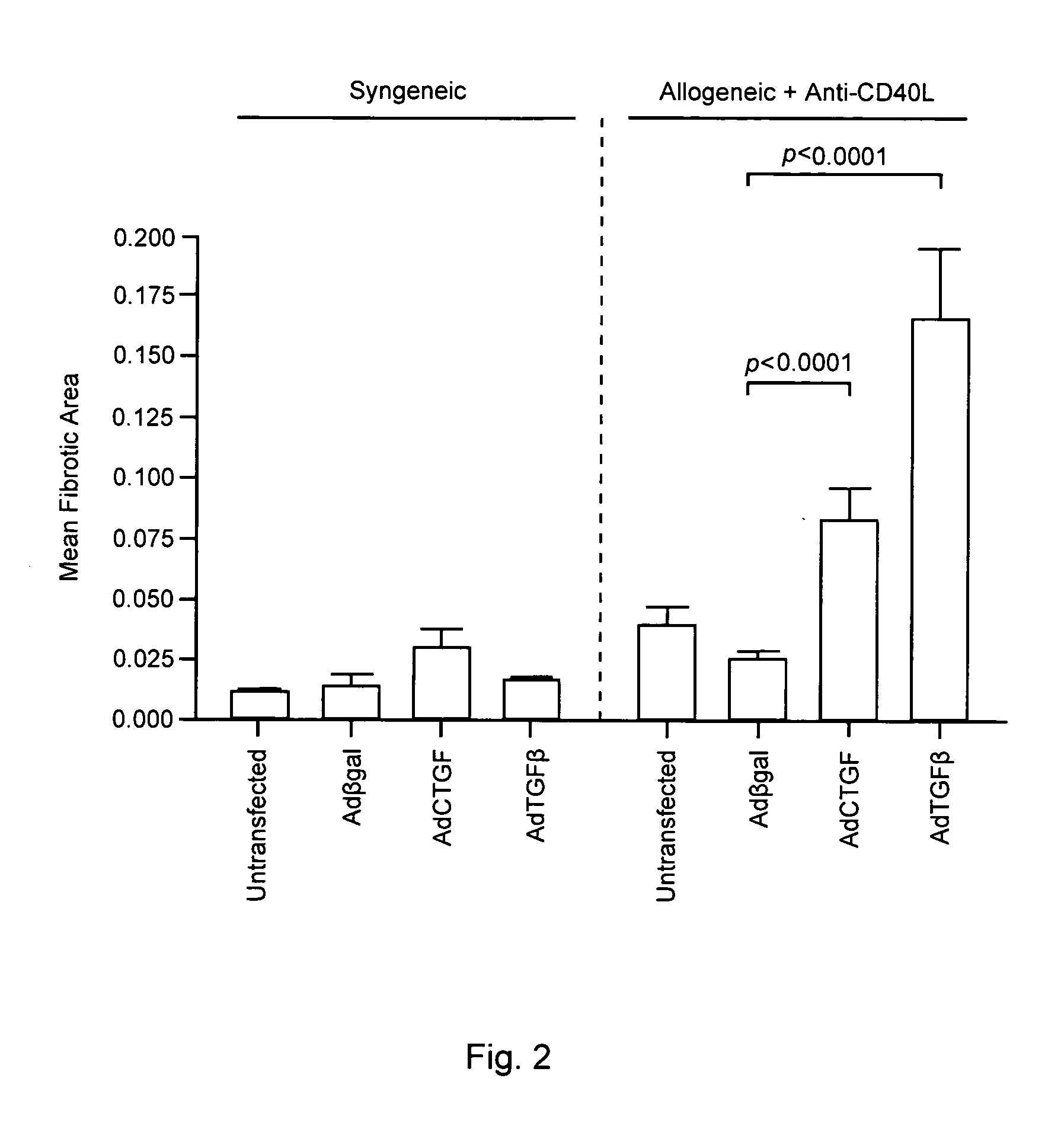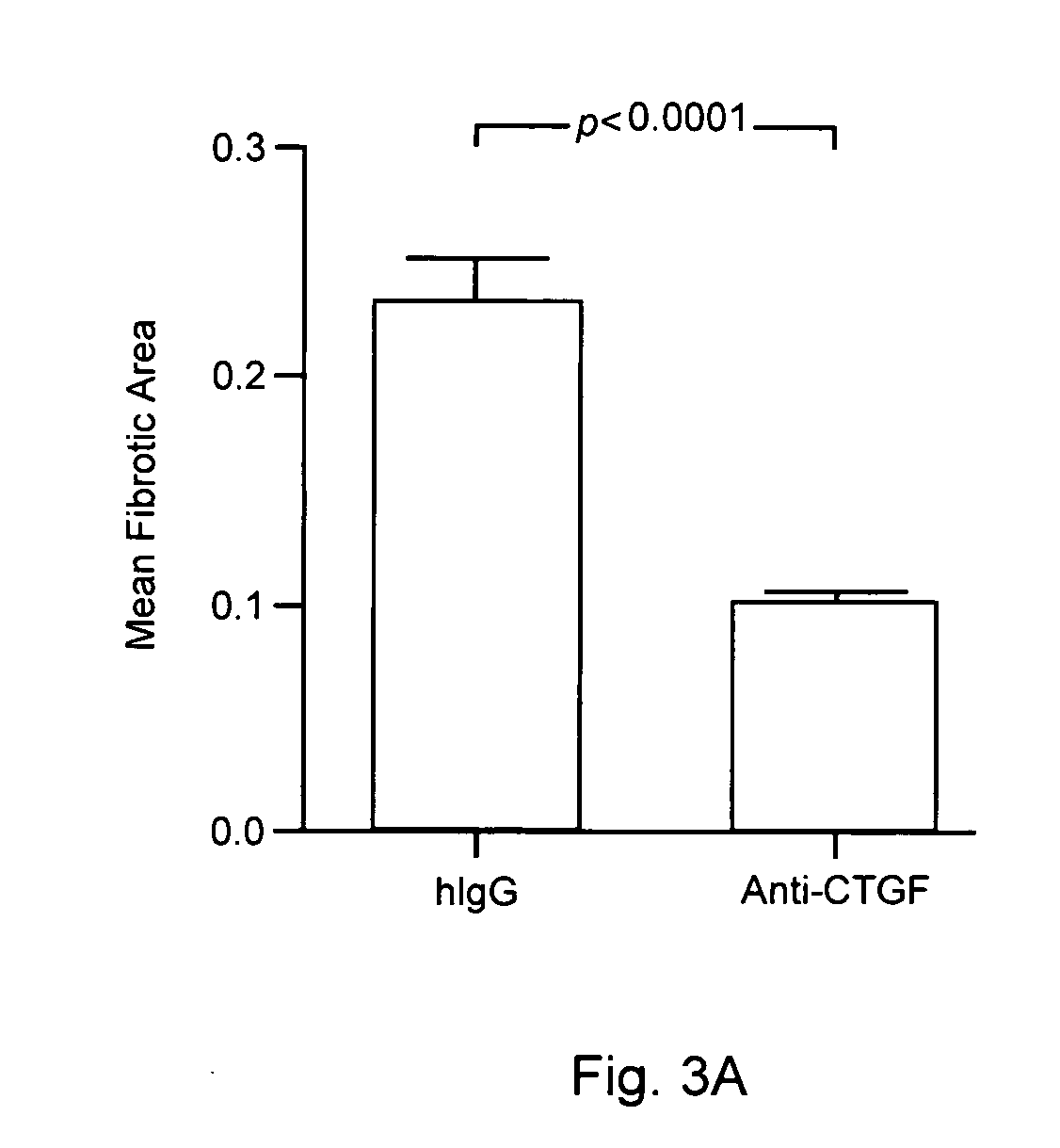Compound and method for treatment of chronic transplant rejection
a transplant rejection and compound technology, applied in the field of compound and method for treating chronic transplant rejection, can solve the problems of affecting the survival of patients, the inability to treat fibroproliferative lesions of progressive chronic, and the inability to achieve long-term graft acceptance. , to achieve the effect of prolonging the survival of an allograft in a recipient and reducing transplant-associated hypertrophy
- Summary
- Abstract
- Description
- Claims
- Application Information
AI Technical Summary
Benefits of technology
Problems solved by technology
Method used
Image
Examples
example 1
Chronic Allograft Rejection Mouse Model
[0080]In the mouse vascularized cardiac allograft model, BALB / c allografts in C57BL / 6 recipients receiving anti-CD40L mAb continue to function for >60 days post transplant and do not develop CR (Csencsits K et al. Am J Transplant 2006 6(5 Pt 1):959-966). In contrast, BALB / c allografts in C57BL / 6 recipients transiently depleted of CD4+ cells by anti-CD4 antibody treatment develop CR as CD4+ cells begin to repopulate the periphery between 3 and 4 weeks following initial depletion (Csencsits K et al. Am J Transplant 2006 6(5 Pt 1):959-966; Bishop D K et al. Transplantation 1994; 58(5):576-584; Piccotti J R et al. Transplantation 1999 67(12):1548-1555; Csencsits K et al. Am J Transplant 2008 8(8):1622-1630). Previous echocardiographic and histologic analysis revealed that day 30 post transplant represents a critical point in this CR model as extensive graft hypertrophy and fibrosis are present at this time and are followed by degradation of cardiac...
example 2
Elevated Intragraft TGFβ, IL-6, and CTGF Expression Correlate with CR
[0081]Transduction of allografts, but not syngeneic grafts, with TGFβ is sufficient to induce CTGF and CR (Csencsits, et al. 2006) indicating the involvement of an immune component in TGFβ-mediated fibrosis. TGFβ, CTGF, and IL-6 (a cytokine recently identified to have a role in CR) transcripts were measured by quantitative real time PCR, as described in Methods and Materials above, the mouse model described in example 1. Expression levels in allografts whose recipients were transiently depleted of CD4+ cells, which develop CR, were compared to levels in allografts whose recipients were treated with anti-CD40L, which do not develop CR, or to levels in untreated syngeneic grafts. Intragraft levels of TGFβ, IL-6, and CTGF were significantly increased (p=0.0476, p=0.0254, and p=0.0079 respectively) in cardiac allografts whose recipients were transiently depleted of CD4+ cells compared to grafts whose recipients were tr...
example 3
Forced Expression of CTGF or TGF3 Promotes Allograft Fibrosis
[0082]To determine whether exogenous expression of CTGF promotes cardiac fibrosis, allografts and syngeneic grafts were transduced with AdCTGF as described in Methods and Materials, above. AdCTGF transduction of allografts in recipients treated with anti-CD40L (which do not undergo CR in the mouse model) caused a significant increase in fibrotic area by day 30 post transplant compared to allografts transduced with control AdβGal virus (FIG. 2). In contrast, syngeneic grafts transduced with AdCTGF had similar levels of fibrosis to the untransduced and AdβGal controls. It should be noted that the mean fibrotic area for AdCTGF-transduced allografts was less than in hearts transduced with AdTGFβ, consistent with previous descriptions in lung transductions (Bonniaud P et al Am J Respir Crit Care Med 2003 168(7):770-778). This difference could not be accounted for by differences in transgene expression levels, as AdTGFβ and AdCT...
PUM
| Property | Measurement | Unit |
|---|---|---|
| time | aaaaa | aaaaa |
| time | aaaaa | aaaaa |
| dissociation constant | aaaaa | aaaaa |
Abstract
Description
Claims
Application Information
 Login to View More
Login to View More - R&D
- Intellectual Property
- Life Sciences
- Materials
- Tech Scout
- Unparalleled Data Quality
- Higher Quality Content
- 60% Fewer Hallucinations
Browse by: Latest US Patents, China's latest patents, Technical Efficacy Thesaurus, Application Domain, Technology Topic, Popular Technical Reports.
© 2025 PatSnap. All rights reserved.Legal|Privacy policy|Modern Slavery Act Transparency Statement|Sitemap|About US| Contact US: help@patsnap.com



